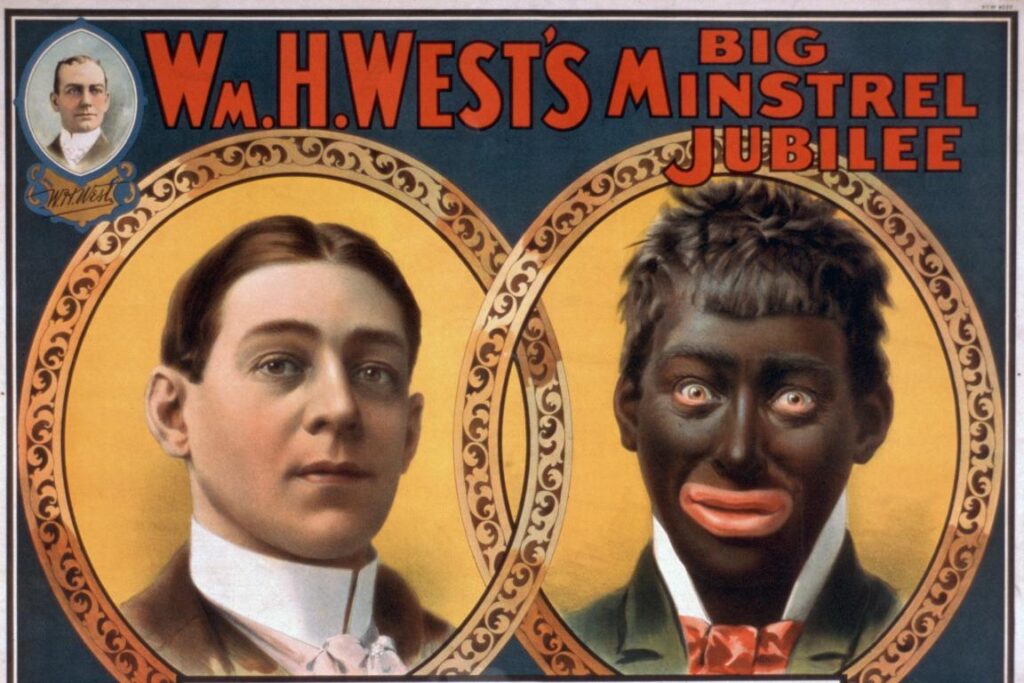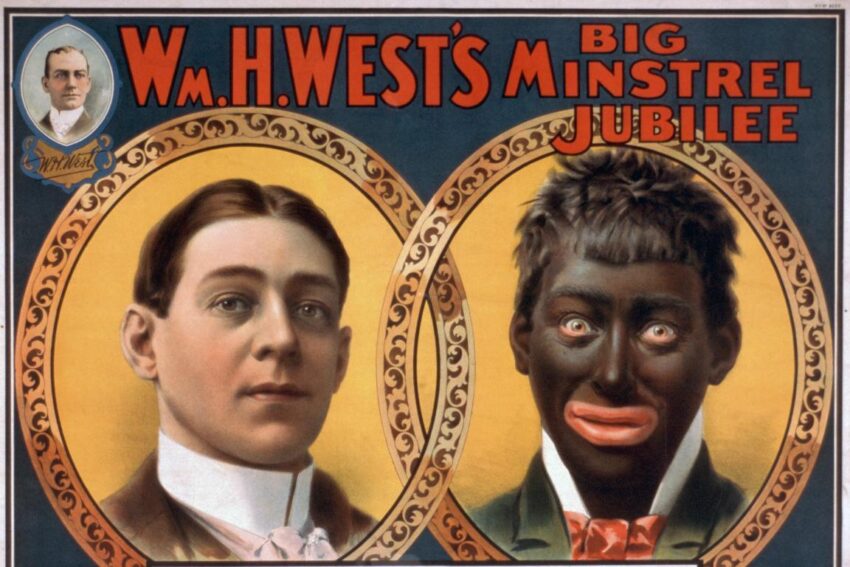NOTE: Originally posted to website Yehoodi.com on March 14, 2018
Earlier this week, the issue of race came to the forefront again in the lindy hop community over something that to an outsider might seem quite benign: a woman came back from a trip to Africa and posted to her social media feed a selfie. But it resurfaced racial issues and tensions that have long been festering in our community.
Let’s unpack it a bit.
The Incident
On Monday morning March 12 Russian lindy hopper Ksenia Parkhatskaya posted to her Instagram feed this picture, with the caption “New style. New vibe. New feel. Loving my gorgeous tresse. It took about 4.5h to make and talented hands of Mami 🙂 #senegaltrip #newvibe #tresse #africainme #afrodancestyles #lifeinecoledessables”.
[NOTE: image removed from Instagram]
A similar post was made on her Facebook wall around the same time (now removed) with the text: “My new African tresse dictates new style and oh how great I feel in it! Outfit for a swing dance evening in Leuven at Apollo Dream workshop. #tresse #africaineme #senegaltrip.”
The Reaction
The reaction on social media was swift and heated.
On Monday March 12, 9:45am in the “Jive Junction” Facebook group, Gary Chyi posted the following: “Remember that European dancer what did a routine in brownface? She might not have learned that lesson so well.”.
Another poster replied: “What’s being pointed out is that this woman has a pattern of not understanding cultural sensitivities. She is participating in aspects of cultures while centering herself. That makes it hard to see how/if she is giving back to the cultures she is taking from which makes her look like a culture vulture.”
This led to a very long and heated debate about Ksenia’s actions and intent. At the time we went to publish, it had 682 comments.
Soon after another lengthy debate ensued on Reddit, that you can follow there.
One commenter: “I agree with the criticism about blackface but this? This is ridiculous. Also it looks like she was teaching a group of african dancers. We don’t know the full story. What is the diference between getting your hair braided and dancing lindy hop? It reminds me of the old conversation of white people can’t do tap dancing.”
At the time of this being published that thread has 235 comments.
Another thread started on the FB page Followlogie, an event where Ksenia is booked to teach at in November.
The Background
You might be thinking, “What’s the big deal, a dancer got her hair done in Senegal and posted a pic of it online? Why are people so mad?” The issue is that this isn’t the first time that Ksenia has been called out for wearing representations of Black people that many found offensive.
She has performed in what in the American context can only be called “blackface” a number of times. Here’s her in 2010.
[NOTE: Video removed from Vimeo]
She apparently performed that routine again in 2011. Video of that performance has been taken down.
She also competed in a solo jazz competition wearing the same costume and makeup at Snowball in Sweden in 2011.
Several people have noted that Ksenia was supposed to be a “chimney sweeper.” But the title of the piece is “pickpocket” and to many she appears to be in blackface.
Then in 2013, Ksenia performed to the Nina Simone song “Four Women” with her skin colored bronze in this instance. Notably, the song is about women of color and their struggles to survive, sung by a Black woman known for her civil rights activism.
Ksenia performing it at an event in Russia in 2013. [NOTE: Video has now been taken down.]
And again at ESDC later in 2013. [NOTE: Video has now been taken down.]
Some have noted that Ksenia might have innocently chosen the costume and make-up in the first instance, when it was performed in Russia. Several Black dancers and others told Ksenia subsequently that this was an extremely racist caricature and was not acceptable. At which point she apologized and stopped performing that routine.
In 2013, a similar situation occurred where Ksenia first performed her “Four Women” routine in Russia. It was after her ESDC routine that several people again contacted her and expressed anger and dismay about it. Again, Ksenia apologized and did not repeat the performance.
So when Ksenia posted on her social media feeds a picture of herself on Monday, clearly proud of her African tresses she got in Senegal, and used the hashtag #africaineme, this was acutely offensive to African-American dancers and others. For many of them, Ksenia continues to ignore the impact of her actions on Black dancers, while working as a professional dancer who specializes in an African-American dance.
To others, Ksenia is being unfairly singled out and stigmatized for her innocent artistic choices. They argue that as a Russian she should not be expected to understand the nuances of the American racial sensitivities. They note her deep appreciation for the Black roots of lindy hop and respect for Black dancers.
Ksenia herself has not responded, as of the time of this being published [If Ksenia is reading this and would like to respond, we’d be happy to share that.] UPDATE: Ksenia responded here. [NOTE: Reproduced below.]
A Note about Blackface

There is a much darker, longer history of white people mimicking Black artistic movement and forms. The larger context of “blackface” and minstrelry in America is too long and complicated for us to delve into on this site. The website Black History defines “blackface” as “a style of theatrical makeup that originated in the United States, and is used to make an actor look like a Black person, but in a very exaggerated way. It is the countenance of an iconic, racist American archetype—that of the ‘darky,’ as Blacks were often called in the past.”
We might recommend two sources to begin to understand the issue: www.black-face.com and www.blackhistory.com.
Ways Forward
This post is not meant to unpack all of the debates that are happening on the internet on this topic. It’s also not meant to focus on just this one dancer and her actions. Our challenge is bigger than that as a community.
I want to offer some ways forward for people who would like to be sensitive to the concerns of African-Americans in our community, and who want to avoid problematic representations when dancing lindy hop.
1. If a person of color finds something you are doing offensive and hurtful, don’t argue, listen to them. Try and understand their perspective and empathize. Apologize and do better next time. A lot of the frustration and anger from Black dancers is that they have communicated their concerns to Ksenia and she didn’t listen to them.
2. Learn about the full history of our dance, and the larger culture it developed within. Andy Reid has an insightful Facebook post about this, where he writes:
“You cannot tell the story of Lindy Hop without telling the story of systemic racism that has been, and continues to be, inflicted upon African Americans. They are woven together. It is both a very sad story and a very triumphant story. If we are to accurately represent this dance, we should be immersed in its whole story, not just the stories that make us feel good.”
3. If you teach swing, share the full history of our dance. Jon Tigert has this challenge:
“When you share ‘after seben’ are you mentioning the MC in blackface and explaining why this exists and why it’s offensive? When you share Hellzapoppin, do you explain that the ‘working class’ costumes they are wearing are not by choice, but because African Americans were seen as subservient to whites? When you share ‘Day at the Races’ do you include that many theatres excluded the dance scene because white people would not tolerate a mixed race scene in a film? Or that Duke Ellington does not appear with his band because he would not wear farm clothes?”
4. Have conversations in your local community about these issues. Make sure that people of color in your community are included and given a voice.
We’ll certainly continue to make mistakes and continue to fight. But let’s keep moving forward.
Shout out to Audrey Ho and Meghan Gilmore for providing links and context for this post.
UPDATE: We clarified the timeline of events in the “Background” section of this post, and noted that Ksenia apologized when she was called out about those performances.
UPDATE: Ksenia sent us a video response.
A Response from Ksenia on Issues of Race and Representation
March 15, 2018
We received this today from Ksenia Parkhatskaya, in response to the online debates that ensued after she posted pictures of herself from a trip to Senegal. Her message:
“3 days ago I posted a picture of me with tresses with the hast tag #africainme, which has lead to a large discussion online over a number of issues surrounding this. I have spent the past three days, reading, speaking to and hearing as wide a range of voices as I can on this subject, to try give as thoughtful and respectful a response as I can, on what I know is a highly sensitive issue. I have left it unedited so apologies if it is long.
Under the video there is also a copy of the public apology I made in November 2013.”
We include that text below the video here too. [NOTE: Video has since been taken down.]
The text of the public apology made in November 2013:
“Seems there are two opinions about me: I don’t know the history or I’m making the mickey out of it/ try to offend the race.
I do honor and admire African American folk culture. I am grateful to this people for they brought so much to the world. As many artists, I “borrow” from it and see it as a source of unlimited inspiration. I study jazz music, sing jazz and dance jazz.
Not claiming to have an the overall knowledge, though there are examples in history starting the beginning 19th when the minstrel shows were top popular, were showed in theatres, broadcasted, transmitted on the radio and were loved immensely and had millions in the audience. Though, history also shows that some pieces were seen by a part of society as an embarrassment despite its huge popularity. And I do see clearly now that in most societies blacking-up (reproduction or grotesque) or even if it’s something that can be approached as the one or interpreted as too close for comfort is unacceptable in any circumstances till being publicly condemned and called racist. And nowadays that applies vastly to the artists of all measures and art pieces in all spheres.
Peter, I heard you and Naomi well and understood what you have told me at Snowball about the make up of my pickpocket guy character. I never performed this dance with makeup ever again and did never blacked-up. Tena, as you correctly copied my letter, I wanted to show this number at ILHC with no blackface make up, because I was told that this is offensive.
4 women. For me it is comparable to painting a picture or making a sculpture, creating a theatrical piece to the topic. And I wanted my picture painted to this song to be whole, integral.
When some topic touches me I want to express it with the language I know the best – dance. Understanding that in African American culture that I honor and respect there are issues and problems I advice on my choices of artistic means to see if they can/will work. They aren’t always, unfortunately.
I’m sorry if it was offensive to anybody, especially that I let my acts to be misunderstood or misinterpreted.”
